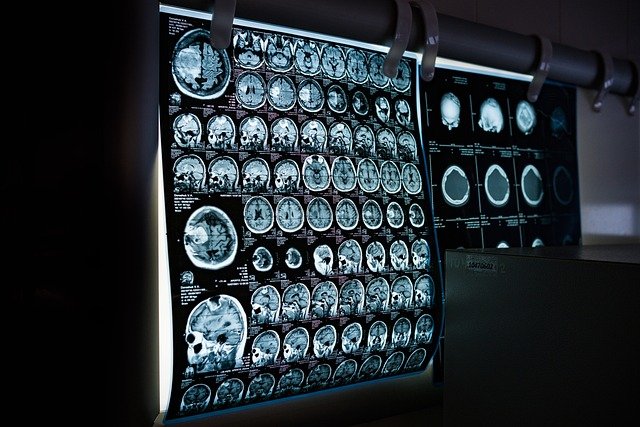Modern Strategies in Prostate Cancer Care: From Prevention to Precision
Prostate cancer remains a major health concern for men worldwide, particularly with advancing age. As of 2025, research and clinical practice are increasingly focused on personalized care — identifying what works best for each individual patient. The modern approach combines innovation, prevention, and continuous monitoring, ensuring that treatment aligns not only with the stage of the disease but also with lifestyle and long-term health goals.In the past, prostate cancer treatment often relied on uniform strategies, but that has changed. Today’s therapies emphasize precision: advanced imaging, targeted radiation, and minimally invasive surgery have transformed outcomes and recovery times. Moreover, new hormonal and immunotherapy options are expanding what’s possible for patients at different stages of the disease. Managing prostate cancer in 2025 means combining cutting-edge technology with holistic patient support — from diagnosis through recovery.

Breakthroughs in Early Detection and Diagnosis
Early detection plays a critical role in improving outcomes for prostate cancer patients. Traditional screening methods, such as the prostate-specific antigen (PSA) test and digital rectal examination (DRE), remain foundational tools. However, recent innovations have enhanced diagnostic accuracy. Multi-parametric MRI imaging allows physicians to visualize suspicious areas with greater precision before performing biopsies, reducing unnecessary procedures and improving detection rates for clinically significant cancers. Genomic testing and biomarker panels are also emerging as valuable tools, helping to distinguish aggressive tumors from slow-growing ones. These breakthroughs enable healthcare teams to tailor screening protocols based on individual risk factors, family history, and genetic predisposition, moving away from one-size-fits-all approaches.
Precision and Minimally Invasive Treatment Techniques
When treatment is necessary, precision medicine and minimally invasive techniques have revolutionized patient care. Robotic-assisted laparoscopic prostatectomy offers surgeons enhanced dexterity and visualization, often resulting in shorter hospital stays, reduced blood loss, and faster recovery times compared to traditional open surgery. Focal therapies, including high-intensity focused ultrasound (HIFU) and cryotherapy, target only the cancerous tissue while preserving surrounding healthy structures, which can help maintain urinary and sexual function. Stereotactic body radiation therapy (SBRT) delivers highly concentrated doses of radiation with pinpoint accuracy, minimizing damage to nearby organs. These approaches reflect a shift toward treating the disease effectively while preserving patient quality of life and reducing treatment-related side effects.
Active Surveillance for Low-Risk Patients
Not all prostate cancers require immediate intervention. For men diagnosed with low-risk, slow-growing tumors, active surveillance has become a widely accepted management strategy. This approach involves regular monitoring through PSA tests, periodic biopsies, and imaging studies to track any changes in the cancer’s behavior. Active surveillance avoids the potential side effects of surgery or radiation while ensuring that treatment can begin promptly if the disease progresses. Studies have shown that many men on active surveillance maintain stable disease for years without requiring active treatment. This strategy acknowledges that some prostate cancers pose minimal threat and that careful observation can be as effective as immediate intervention, sparing patients from unnecessary procedures and their associated risks.
When Systemic or Alternative Therapies Are Recommended
For advanced or metastatic prostate cancer, systemic therapies become essential components of the treatment plan. Hormone therapy, also known as androgen deprivation therapy (ADT), works by reducing testosterone levels, which can fuel cancer growth. Chemotherapy may be recommended when the cancer no longer responds to hormone treatment. Newer targeted therapies and immunotherapies are showing promise in clinical trials, offering additional options for patients with resistant or recurrent disease. Some patients also explore complementary approaches, such as dietary modifications, exercise programs, and stress reduction techniques, alongside conventional treatments. While alternative therapies should never replace evidence-based medical care, integrating supportive practices under professional guidance can enhance overall well-being and help manage treatment side effects.
Supporting Recovery and Long-Term Health
Recovery from prostate cancer treatment extends beyond the medical procedures themselves. Rehabilitation programs focused on pelvic floor exercises can help restore urinary continence and sexual function following surgery or radiation. Nutritional counseling supports patients in maintaining healthy weight and energy levels during and after treatment. Mental health services, including counseling and support groups, address the emotional challenges that often accompany a cancer diagnosis. Regular follow-up care is essential for monitoring recovery, detecting potential recurrence, and managing long-term side effects. Survivorship care plans provide personalized roadmaps for ongoing health maintenance, including recommendations for lifestyle modifications, screening schedules, and symptom management. By addressing physical, emotional, and social aspects of recovery, comprehensive care programs help patients transition from active treatment to long-term wellness.
The evolution of prostate cancer care reflects a broader shift toward personalized, patient-centered medicine. From sophisticated diagnostic tools that identify disease earlier and more accurately, to treatment options that balance efficacy with quality of life, modern strategies offer hope and improved outcomes. Whether through active surveillance for low-risk cases, precision interventions for localized disease, or systemic therapies for advanced stages, today’s approach recognizes that each patient’s journey is unique. Collaboration between patients, families, and multidisciplinary healthcare teams remains central to navigating this complex landscape and achieving the best possible results.
This article is for informational purposes only and should not be considered medical advice. Please consult a qualified healthcare professional for personalized guidance and treatment.




